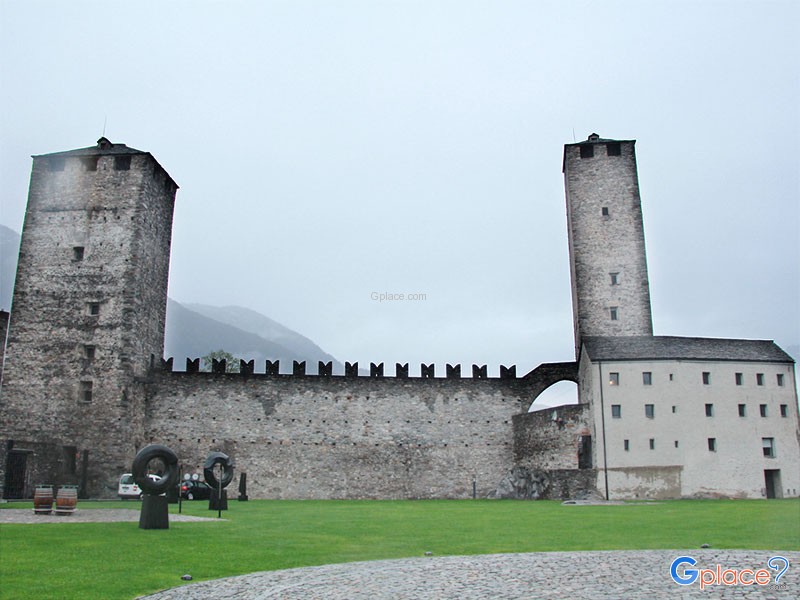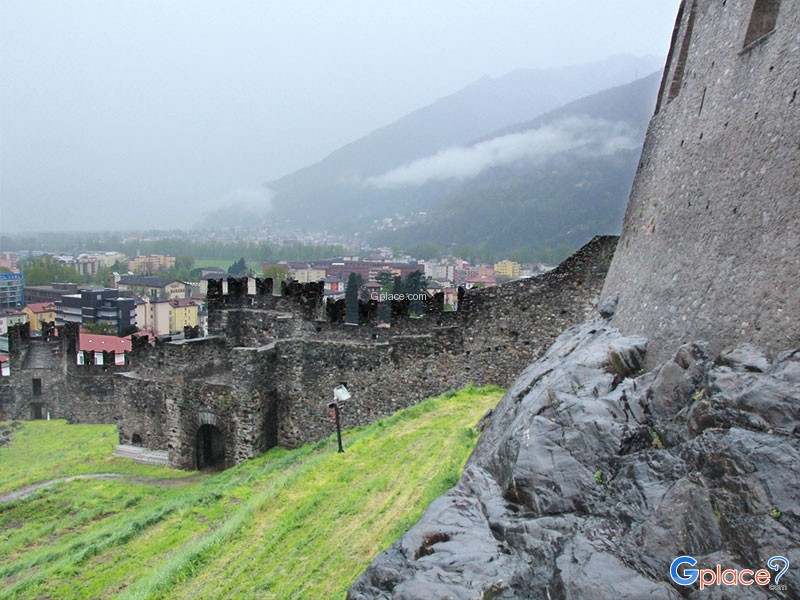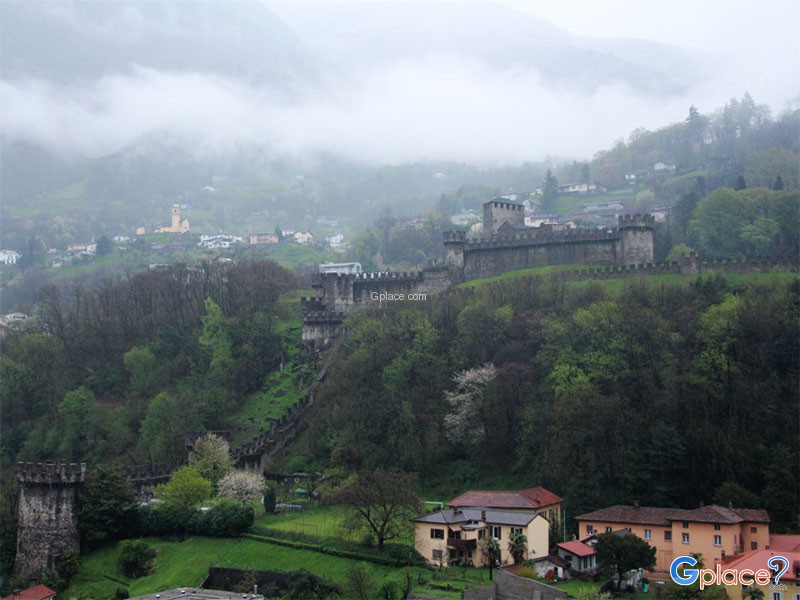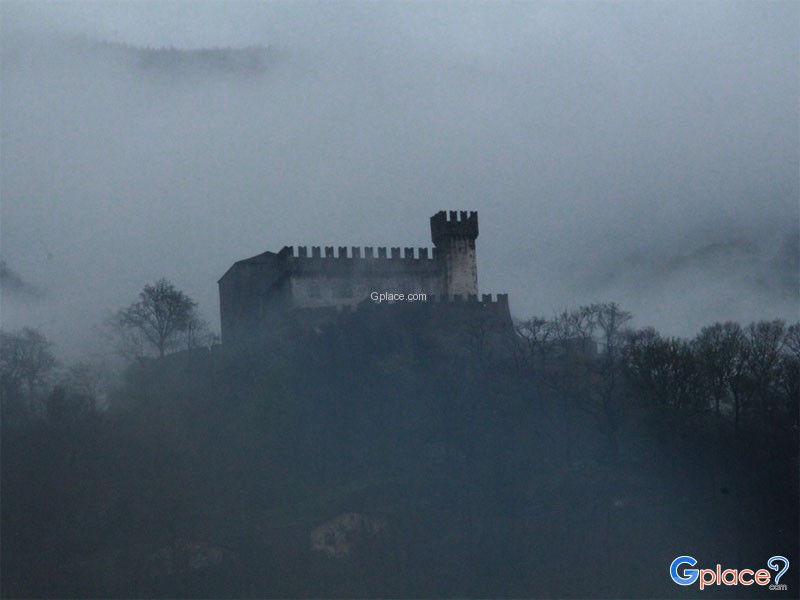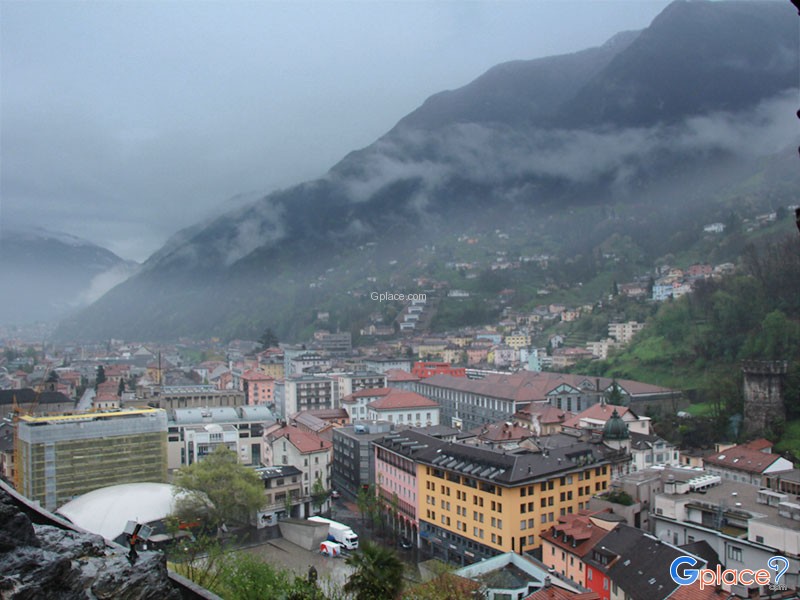“3 Castles of Bellinzona, UNESCO e.g. Castelgrande, Montebello and Sasso Corbaro”
Castels of Bellinzona are considered amongst the finest examples of medieval fortification architecture in Switzerland. As they appear today, the fortifications, whose origins actually go much further back to a prehistoric settlement on Castelgrande hill, are mainly the result of intensive and complex building activity instigated by the Dukes of Milan in the 15th century. The construction of powerful defence installations which formed a barrage across the whole of the Ticino Valley floor to halt the advance of the confederates dates back to this period in history. Right up to the present day, these fortifications, with their battlements, towers and gates, continue to be a source of wonder and fascination.
At the crossroads of the Alpine passes
When describing Bellinzona as a key to the Alpine passes and as an essential gateway to Italy in a letter to the Duke of Milan in 1475, the war minister Azzo Visconti emphasised the city's strategic role and stressed the need to carry out improvements to the fortifications in the Ticino Valley. In fact, more passes converge at Bellinzona than at any other southern outlet of the Alps. Not only the St. Gotthard, Nufenen, Lukmanier and St. Bernard Passes, all now open to modern day traffic, but other ancient routes, such as the busy Greina and the St.-Jorio along the westeast axis Domodossola Centovalli Valtellina, were also traversed by travellers on foot, horseback or mules. Where the valley narrows at Bellinzona, within the space of a few kilometres all these routes converged into a single artery which, further south, split once again into the many roads and waterways winding their way down to the plain of Lombardy. Over the centuries, the popularity of each single pass waxed and waned with the sovereigns, ambassadors, messengers, merchants, herdsmen, pilgrims, soldiers, refugees and beggars who used them to cross the Alps.
Similarly, the strategic importance of Bellinzona was subject to variations during the passage of time, due, on the one hand, to changes in transport policy and, on the other, to its particularly favourable topographical location for the construction of fortification works. A rocky hillside which stretches from the eastern flank of the valley far into the plain forms a natural barrier, leaving only two ways through: to the east, a narrow area where the town became established in the Middle Ages, and, to the west, the flat valley floor bathed by the unpredictable waters of the Ticino which flow into lake Maggiore. It would be hard to imagine a place better suited than this for building fortifications which would make a defensive barrier right across the valley.
Until recent times, the hostile conditions of the flood plain of the Ticino, whose waters reduced the Magadino Plain to marshland, made it totally unsuitable for human settlement. Right up to the 15th century, a navigable stretch of the Lake Maggiore stretched as far as Bellinzona, giving rise to the creation of a small river port near the Torretta.




